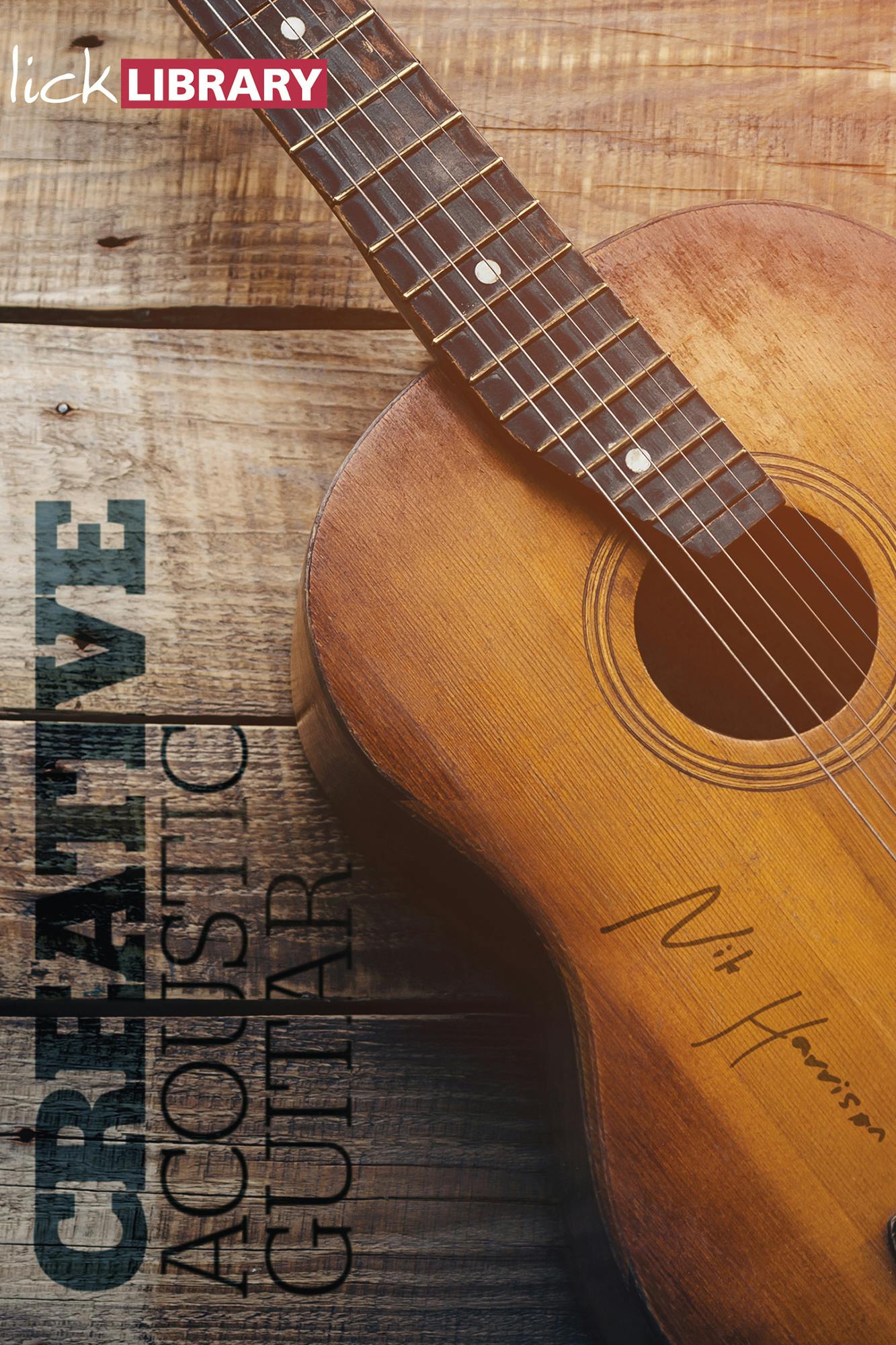
Own an Acoustic Guitar? – You Should Listen to These 5 Albums.
Sonically, we can draw a huge amount of musical inspiration from the world of acoustic guitar recordings - even if it's not our primary style! With alternate tunings, dark and often ominous harmonies, many players have turned their attention, and ears, towards exclusively acoustic albums to gain a fresh perspective. Here are 5 top picks to get you in an acoustic frame of mind.
1. John Martyn - Solid Air
A master class in dark and beautiful open tunings, Solid Air is one of the great singer songwriter albums of the 1970’s. The songwriting itself is, of course, exceptional. However, it is the distinctive guitar playing that seems to mark this as such an innovative piece of work. Released in 1973, the album was recorded in just eight days and features a signature blend of sounds pulled from British folk ballads, jazz, blues, and psychedelia.
On the title track ‘Solid Air’, Martyn uses a Cm11 tuning (C G Eb F Bb D) – a tuning well worth experimenting with in your own practice as it plays perhaps the most crucial role in forming the dark and spacey sonic landscape of the track. In fact, only a small handful of tracks on the album feature standard tuning.
The more commonly recognised DADGAD tuning is used on ‘The Man In The Station’, as well as a further altered version DADGCE appearing on ‘Go Down Easy’. Open D major with the addition of a capo at the fifth fret helps to create the sunny nostalgia of ‘Over The Hill’ and a dropped D on the low E string helps flesh out the bottom end on ‘Don’t Want To Know’ and ‘May You Never’.
Martyn’s style encompasses the best of folk acoustic techniques with a robustly percussive approach often coming to the fore. The music is moody, often melancholic and always smooth– think classic singer-songwriter only much much cooler.
2. Rodrigo Y Gabriela - Rodrigo Y Gabriela
This self-titled album from Mexican guitar duo Rodrigo y Gabriela takes the percussive rhythm techniques and nylon strings of flamenco and blends them with the classic rock and heavy metal music the pair grew up on.
The duo first began working together musically as part of a heavy metal band formed by Rodrigo Sánchez, Tierra Ácida, a perhaps unexpected origin for an acoustic act. However their rock roots come to the fore as this entirely instrumental album features ingenious cover versions of Led Zeppelin’s ‘Stairway to Heaven’ and Metallica’s ‘Orion’ alongside the collection of masterfully crafted originals.
The accomplished lead playing by Sánchez is matched, and perhaps at times outshined, by the blazingly fast rhythm playing from Gabriela Quintero. Quintero’s technique often involves rapid triplets achieved by keeping a very loose wrist and striking the strings in the sequence of a downstroke with the fingers, a downstroke with the thumb, and a successive upstroke with the thumb at lightning speed.
The understated production of the record and the use of percussive drumming on the guitar bodies allows this album to stand out as a true testament to how full a musical sound can be coaxed from just two guitars. One listen to Rodrigo Y Gabriela will undoubtedly have you reaching for that old nylon string you forgot about when you bought your first electric guitar.
3. Robert Johnson - King of The Delta Blues Singers
Whilst this is a posthumous collection of singles rather than an album in the traditional sense, King of The Delta Blues Singers is essentially the seminal text from which many great classic rock riffs were formed – or pinched, depending on your perspective.
As the original member of the 27 club and the subject of accusations that he sold his soul to the devil in exchange for his talents, Johnson is also the prototypical embodiment of the guitar player mythos. For these reasons alone, this album is a must listen. The recordings featured were made during two sessions between 1936 and 1937 and curated into the album we know today during the folk revival of the 1960’s.
The recordings had little success at the original time of their release with the modest regional hit ‘Terraplane Blues’ , which would one day form the foundation of Led Zeppelin’s ‘Trampled Underfoot’, being the most successful single of the selection at the time. Yet the place of Johnson’s work in the tradition of blues and the more widespread popularity of the album during the folk revival of the 60’s has lead to Robert Johnson being covered by legends from The Rolling Stones and Cream to Howlin’ Wolf and Muddy Waters.
The music itself is quintessential delta blues and a display of prestigious guitar playing. Johnson manages to maintain a rhythmic accompaniment on the lower string with his thumb whilst simultaneously picking out a melody on the higher strings with skilful clarity.
There’s a palpable intensity to the performances, with the interaction between guitar and voice often more a duet than an accompaniment – particularly where Johnson’s expressive slide playing is concerned. For any fan of blues or rock guitar, this album is an incredibly important chapter in the story of those guitar styles.
4. Simon & Garfunkel - Sounds of Silence
Where beautifully finger picked melodies are concerned, Sounds of Silence by Simon & Garfunkel is the perfect textbook. It is their second studio album, released in 1966 and features acoustic guitar performances by Paul Simon, Fred Carter Jr., Glen Campbell, and Joe South.
Paul Simon is perhaps overlooked as an incredibly accomplished guitar player owing to his talents as a songwriter and lyricist. His experience learning from English folk musicians before the duo’s inception shines through in his, often, modal approaches and his American folk roots are audible in his frequent employment of the alternating bass line.
Simon’s rock-solid right hand is the most noteworthy aspect of his guitar approach on this album with tracks like ‘April Come She Will’ and ‘Kathy’s Song’ being entirely bought to life by the delicate weaving of melodies within chords. Guitar instrumental ‘Anji’, a composition credited to British guitarist Davey Graham, seems to highlight the importance of the guitar on the record and is an excellent finger style study for anyone looking to seriously improve their acoustic fingerstyle skills.
A bluesy melody dances over a strong bass line picked out with the thumb, whilst the addition of characterful bends helps this piece stand out as a lesson in the essence of the 60’s folk revival – a time that saw excellence in Americana, blues, country and British folk music combine.
5. Fleetwood Mac - Rumours
It is unlikely if you are reading an article on a guitar blog that this album has passed you by. Rumours by Fleetwood Mac is one of the most recognised rock albums of all time. However, even after many listens, it is easy to miss just how notable Lindsey Buckingham’s prowess on the acoustic guitar really is. Released in 1977, and created with the intention of expanding the bands commercial success during a period of interpersonal turmoil among the members, Rumours has the best of blues, rock, folk, and pop.
The standout track on the album, where guitar playing is concerned, is ‘Never Going Back Again’. The unassuming, upbeat melody masks a devilishly tricky guitar part that is a must try for anyone looking to improve on the acoustic guitar. The song is in drop D tuning, a tuning that appears many times throughout his body of work, and has a capo at the fourth fret.
‘Never Going Back Again’ reveals that Buckingham doesn’t just have the kind of dexterous finger picking technique demonstrated by his contemporaries, he also has formidable strength in his fretting hand as evidenced by the stretchy chord shapes, powerful hammer-ons and crystal-clear slides required to play the riff. Buckingham’s real talent lies in hiding ‘flashy’ playing in plain sight - evidence of his ability to make the most musical decision without the archetypical ego problems of many a lead guitarist.
There’s a huge amount of versatility on the album with the guitar hook at the beginning of ‘The Chain’ effectively serving the same purpose as many an instantaneously recognisable amplified riff as an opening to a rock classic.
The textural playing throughout the rest of the album further demonstrates the power of an acoustic guitar in fleshing out a rock sound with lush, open chord voicings and driving rhythms underpinning hits like ‘Go Your Own Way’ and ‘Second Hand News’. You may have heard this album many times, but listening with the sole intention of noticing Buckingham’s genius creates an entirely new experience.
Hopefully this has you reaching for that acoustic! If there's one take away from this blog, it is that the guitar world is full of diverse inspiration; broadening our musical palette, even a little, can have a wide reaching benefit on our ears and fingers!

